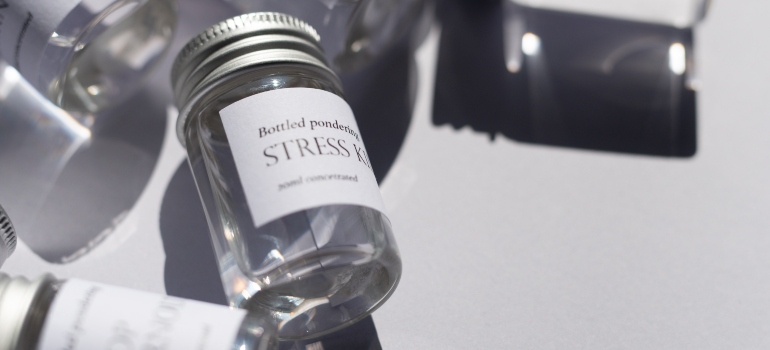Common Co-occurring Disorders in Dual Diagnosis
Are you or someone you know grappling with dual diagnosis? Dual diagnosis refers to the simultaneous presence of two or more mental health conditions. Examples include anxiety or depression alongside substance use disorder, as well as mood disorders coupled with anxiety. Effectively treating co-occurring disorders necessitates specialized Pennsylvania substance abuse treatment programs and integrated approaches, employing a collaborative team of professionals. In this article, we’ll explore common co-occurring disorders in dual diagnosis, shedding light on their complexity. We will also show you how you can achieve full recovery through dual diagnosis treatment!
Jump to Section
What are Co-occurring Disorders
Co-occurring disorders, also known as dual diagnosis, refer to the simultaneous presence of substance use disorder and one or more mental health conditions. This combination often creates a complex situation that requires comprehensive and integrated treatment approaches. It’s important to grasp that these disorders can reinforce and exacerbate one another, making a proper diagnosis and tailored treatment crucial for successful recovery.
In substance abuse treatment, a comprehensive evaluation is conducted to identify the specific co-occurring disorders. This evaluation involves a thorough assessment of an individual’s substance use patterns, mental health symptoms, and any potential underlying factors contributing to the co-occurring conditions. The information gathered during this process guides the development of an individualized treatment plan that addresses both substance abuse and co-occurring disorders concurrently.

With that in mind, recovery from co-occurring disorders is a journey that requires commitment, perseverance, and ongoing support. It’s important to remember that undergoing a long term drug rehab Pennsylvania program is a sign of strength, and with the right treatment and support, individuals can overcome the challenges associated with co-occurring disorders and achieve lasting recovery.
While there is a practically infinite number of unique co-occurring disorders (as every person is unique), there are several that are much more common than others.
Most Common Co-occurring Disorders in Dual Diagnosis
- Attention-Deficit Hyperactive Disorder (ADHD)
- Post-Traumatic Stress Disorder (PTSD)
- Bipolar Disorder
- Generalized Anxiety Disorder (GAD)
- Schizophrenia
- Eating disorders
These are just a few examples of the common co-occurring disorders in dual diagnosis. It’s important to note that the interplay between these conditions can vary from person to person. With that in mind, let’s explore these disorders in a bit more detail.
Attention-Deficit Hyperactivity Disorder (ADHD)
Attention deficit/hyperactivity disorder, commonly known as ADHD, is a neurodevelopmental disorder that affects both children and adults. It involves persistent patterns of inattention, hyperactivity, and impulsivity that can interfere with daily functioning and quality of life.
Individuals with ADHD often struggle with maintaining focus, organizing tasks, and regulating their impulses. This can manifest in various ways, such as being easily distracted, forgetful, and having difficulty following instructions or completing tasks. Hyperactivity may also be present, leading to restlessness, fidgeting, and a constant need for movement or physical activity.
ADHD and alcohol
Individuals with ADHD may be at a higher risk for developing alcohol use problems compared to those without the disorder. This increased risk can be attributed to various factors, including impulsivity, difficulties with self-regulation, and greater susceptibility to engaging in risky behaviors. Individuals with untreated ADHD symptoms may turn to alcohol as a means of self-medication, attempting to alleviate symptoms such as restlessness, impulsivity, or difficulties with focus.

The co-occurrence of ADHD and AUD can create a complex interplay between the two conditions. Alcohol can interfere with the effectiveness of ADHD medications, rendering them less efficient in managing symptoms. Moreover, alcohol can exacerbate ADHD symptoms and contribute to difficulties with attention, executive functioning, and impulse control. This, in turn, can perpetuate a cycle of alcohol misuse and further impair overall functioning.
When addressing dual diagnosis of ADHD and alcohol, an integrated and multidimensional treatment approach is crucial. It typically involves a combination of therapies at one of the alcohol rehab centers Pennsylvania has to offer, such as medication management, cognitive-behavioral therapy (CBT), and psychoeducation. CBT can help individuals develop coping strategies for managing ADHD symptoms, address underlying triggers for alcohol use, and learn healthier ways of dealing with stress or emotional challenges.
Post-Traumatic Stress Disorder (PTSD)
PTSD is one of the most common co-occurring disorders in dual diagnosis. PTSD can occur in response to various types of traumatic events, such as military combat, natural disasters, physical or sexual assault, accidents, or serious injuries. The severity and duration of symptoms can vary from person to person. Common symptoms of PTSD include intrusive and distressing memories or flashbacks of the traumatic event, nightmares, intense emotional distress, avoidance of triggers associated with the trauma, hyperarousal (feeling constantly on edge or easily startled), negative changes in mood or cognition, and changes in sleep and appetite patterns.
Understanding the causes of PTSD is complex, as it can involve a combination of biological, psychological, and environmental factors. Individuals with a history of previous trauma, a family history of mental health conditions, or certain personality traits may be more susceptible to developing PTSD. Additionally, the intensity and duration of the traumatic event, the level of perceived threat, and the availability of support systems can all contribute to the development of PTSD.
PTSD and opioid addiction
PTSD and opioid addiction often co-occur, meaning they frequently occur together in the same individual. This dual diagnosis can be particularly challenging, as both conditions can exacerbate and interact with one another, complicating treatment and recovery.
Individuals with PTSD may be more vulnerable to developing opioid addiction due to several factors. Traumatic experiences can lead to emotional distress, anxiety, and a desire to numb or escape the associated feelings. Opioids, which are powerful pain-relieving medications, can provide temporary relief and a sense of calm. Consequently, individuals with PTSD may be more likely to misuse or become dependent on opioids as a coping mechanism.

On the other hand, opioid addiction can worsen symptoms of PTSD and hinder the recovery process. Opioids affect brain chemistry and can disrupt the natural stress response systems, making it more difficult for individuals to regulate their emotions and process traumatic memories. This is why treatment at an IOP Pennsylvania program is highly recommended. Opioid misuse can also contribute to social and occupational problems, financial difficulties, and strained relationships, further exacerbating the overall impact of PTSD.
Bipolar Disorder
Bipolar disorder, also known as manic-depressive illness, is another one of the common co-occurring disorders in dual diagnosis. It is a mental health condition characterized by significant shifts in mood, energy levels, and activity levels.
This disorder is marked by two primary mood episodes: manic episodes and depressive episodes. Manic episodes involve an elevated mood, increased energy, racing thoughts, decreased need for sleep, excessive talkativeness, impulsivity, and an inflated sense of self-importance. Depressive episodes, on the other hand, involve feelings of sadness, hopelessness, loss of interest or pleasure in activities, changes in appetite and sleep patterns, fatigue, difficulty concentrating, and thoughts of death or suicide.
The exact cause of bipolar disorder is not fully understood. However, it is believed to be a combination of genetic, environmental, and neurochemical factors. A family history of the disorder or other mental health conditions can increase the risk of developing bipolar disorder. Stressful life events, substance abuse, and disruptions in circadian rhythms may also play a role in triggering or exacerbating symptoms.
Alcohol and bipolar disorder
Bipolar disorder and alcohol abuse frequently go hand-in-hand. However, the relationship between the two is complex and can have both short-term and long-term effects on the individual’s mood and overall well-being.
While some individuals with bipolar disorder may turn to alcohol as a way to cope with the challenging symptoms of the condition, alcohol can actually worsen symptoms and disrupt the stability of mood episodes. Alcohol is a depressant that can interfere with the effectiveness of mood-stabilizing medications prescribed for bipolar disorder. It can also trigger or intensify depressive episodes, increase impulsivity during manic episodes, and negatively impact overall treatment outcomes.
Moreover, alcohol can disrupt sleep patterns, exacerbate anxiety, and impair judgment and decision-making abilities. These factors can further complicate the management of bipolar disorder symptoms and contribute to unstable moods or risky behaviors.

Individuals with bipolar disorder who misuse alcohol may also experience difficulties in their personal and professional lives. Alcohol misuse can strain relationships, lead to financial problems, and require you to seek treatment at one of the dual diagnosis treatment centers Pennsylvania. Additionally, alcohol use can interfere with treatment adherence and make it more challenging to effectively manage bipolar disorder symptoms.
Generalized Anxiety Disorder (GAD)
Generalized anxiety disorder is a common mental health condition characterized by persistent and excessive worry or anxiety about various aspects of life, such as work, relationships, health, or everyday situations. It is also one of the most common co-occurring disorders in dual diagnosis.
The primary feature of GAD is excessive worry that is difficult to control. This occurs on most days for a period of at least six months. Individuals with GAD often find it challenging to shake off their worries. Furthermore, they may experience physical symptoms such as restlessness, fatigue, difficulty concentrating, muscle tension, and sleep disturbances. The worry associated with GAD tends to be disproportionate to the actual circumstances, causing significant distress and impairing daily functioning.
The exact cause of GAD is likely to involve a combination of genetic, environmental, and psychological factors. A family history of anxiety disorders, chemical imbalances in the brain, and certain life experiences, such as trauma or chronic stress, can increase the risk of developing GAD.
GAD and substance use disorder
The relationship between generalized anxiety disorder (GAD) and substance use disorder (SUD) is significant. Co-occurring GAD and SUD can present complex challenges and greatly impact individuals affected by both conditions.
People with GAD may be more prone to developing substance use disorders as a means of self-medication or coping with anxiety symptoms. Excessive worry, restlessness, and discomfort associated with GAD may lead individuals to turn to substances, such as drugs or alcohol, in an attempt to alleviate anxiety or find temporary relief, ultimately ending up in one of the benzodiazepine rehab centers, for example. Unfortunately, this self-medication can worsen anxiety over time and contribute to a cycle of declining mental health and substance misuse.
Conversely, substance use can exacerbate GAD symptoms and impede recovery. Substances can disrupt brain chemistry and interfere with the effectiveness of anxiety medications or other treatments. Intoxication or withdrawal from substances can trigger or intensify anxiety symptoms, perpetuating the cycle of anxiety and substance misuse.

Schizophrenia
Schizophrenia is a chronic mental health disorder that affects a person’s perception of reality, thinking patterns, emotions, and behaviors.
This mental health disorder is characterized by a range of symptoms, which can vary in severity and presentation among individuals. Positive symptoms include hallucinations (perceiving things that are not there), delusions (strongly held beliefs that are not based on reality), disorganized thinking, and abnormal motor behaviors. Negative symptoms include reduced emotional expression, decreased motivation and pleasure in activities, and difficulties with cognitive functioning such as memory and attention.
Similar to bipolar disorder, the exact cause of schizophrenia is not fully understood. Family history of schizophrenia, certain brain abnormalities, imbalances in neurotransmitters, and prenatal exposure to viruses or complications during birth are among the factors that may contribute to the development of the disorder.
Substance use disorder and schizophrenia
Substance use disorders, including alcohol and drug addiction, frequently co-occur with schizophrenia. There are several reasons why individuals with schizophrenia may be more vulnerable to developing SUD. Some people with schizophrenia may use substances such as cocaine as a way to cope with the distressing symptoms of their condition or to self-medicate and have to undergo cocaine rehab. Substance use can temporarily alleviate symptoms such as social withdrawal, anxiety, or depressive feelings. However, long-term substance use can exacerbate symptoms of schizophrenia, interfere with treatment outcomes, and worsen overall functioning.
The presence of SUD can complicate the treatment of schizophrenia. Substance use can interfere with the effectiveness of medications prescribed for schizophrenia, making it more challenging to manage symptoms and achieve stability. Additionally, substance intoxication or withdrawal can trigger or intensify psychotic symptoms, leading to a worsening of the overall clinical picture.
Eating disorders
Easting disorders are complex mental health conditions characterized by disturbed eating patterns, distorted body image, and an intense preoccupation with weight, shape, and food.
There are several types of eating disorders, including anorexia nervosa, bulimia nervosa, binge eating disorder, and other specified feeding or eating disorders (OSFED). Anorexia nervosa involves severe food restriction, bulimia nervosa includes cycles of binge eating and compensatory behaviors, binge eating disorder entails recurrent episodes of overeating, and OSFED encompasses variations that don’t fit specific criteria.

These disorders have serious physical and emotional consequences, including malnutrition, electrolyte imbalances, gastrointestinal issues, and co-occurring mental health conditions.
Eating disorders and drug addiction
Individuals with eating disorders may turn to drugs as a way to cope with the emotional distress, body dissatisfaction, or low self-esteem associated with their eating disorder. Drugs may provide temporary relief from negative emotions, suppress appetite, or enhance a sense of control. However, continued drug use can worsen the symptoms of the eating disorder. It can also lead to a destructive cycle that perpetuates both conditions.
Likewise, drug addiction can contribute to the development or exacerbation of an eating disorder. Some substances, particularly stimulants or appetite suppressants, facilitate weight loss or control food intake. This can lead to dangerous weight loss, malnutrition, and severe physical and psychological consequences associated with the eating disorder.
Treating Co-occurring disorders Through Dual Diagnosis
Treating common co-occurring disorders in dual diagnosis through a comprehensive approach is essential to effectively address the complex interplay between mental health conditions and substance use disorders. By recognizing and treating both conditions concurrently, individuals can experience more comprehensive and successful outcomes in their recovery journey.
The dual diagnosis approach involves integrated and coordinated care from a multidisciplinary team of professionals, including psychiatrists, psychologists, addiction specialists, and other mental health professionals. Here are the key components of treating co-occurring disorders through dual diagnosis:
- Comprehensive assessment
- Integrated treatment plan
- Medication management
- Evidence-based therapies
- Integrated psychosocial interventions
- Continuum of care
- Holistic approach
- Supportive network

Comprehensive assessment
A comprehensive assessment is a crucial first step in effectively treating co-occurring disorders through a dual diagnosis approach. A comprehensive assessment in a heroin rehab Pennsylvania program, for example, aims to gather detailed information about an individual’s mental health, substance use patterns, personal history, and current functioning. It helps inform the development of an individualized treatment plan tailored to their specific needs and circumstances.
Based on the findings of the comprehensive assessment, a treatment team can collaboratively develop an individualized treatment plan.
Integrated treatment plan
A personalized treatment plan is developed to address both mental health and substance use disorders simultaneously. This plan takes into account the unique needs, preferences, and goals of the individual. It may involve a combination of evidence-based therapies, medications, and psychosocial interventions.
Medication management
Medications may be prescribed to manage the symptoms of mental health disorders. They can alleviate withdrawal symptoms, or support recovery from substance use disorders. Close monitoring and collaboration between medical and mental health professionals in a drug rehab center Reading PA, for example, are crucial to ensure the effectiveness and safety of medication use. Self-medication can only lead to further issues.
Evidence-based therapies
Evidence-based therapies are treatment approaches that have been extensively researched. Furthermore, they have been proven effective in addressing specific mental health and substance use disorders. These therapies are grounded in scientific evidence and have demonstrated positive outcomes in clinical trials and research studies. Here are some commonly used evidence-based therapies:
- Cognitive-Behavioral Therapy (CBT): CBT helps individuals identify and modify negative thought patterns and behaviors that contribute to mental health or substance use issues. It focuses on developing healthier coping strategies, improving problem-solving skills, and challenging distorted beliefs.
- Dialectical Behavior Therapy (DBT): DBT is often used to treat borderline personality disorder and other conditions involving emotional dysregulation. It combines elements of CBT with mindfulness techniques, interpersonal effectiveness, emotion regulation, and distress tolerance skills.
- Motivational Interviewing (MI): MI is a person-centered approach that aims to enhance an individual’s motivation to change. It involves a collaborative and empathetic style of communication to help individuals explore their ambivalence, resolve doubts, and increase readiness for change.
- Acceptance and Commitment Therapy (ACT): ACT focuses on accepting difficult emotions and thoughts while taking committed actions aligned with personal values. It emphasizes mindfulness, self-compassion, and psychological flexibility to help individuals lead more meaningful lives.
- Trauma-Focused Therapies: These therapies, such as Eye Movement Desensitization and Reprocessing (EMDR) and Trauma-Focused Cognitive-Behavioral Therapy (TF-CBT), target the effects of trauma on mental health and substance use disorders. They help individuals process traumatic experiences, develop coping skills, and reduce trauma-related symptoms.
- Family Therapy: Family therapy involves the participation of family members in the treatment process. It aims to improve communication, resolve conflicts, and enhance support within the family system.
- Group Therapy: Group therapy provides a supportive environment where individuals with similar challenges can share experiences, gain insight, and learn from one another.

Integrated psychosocial interventions
Psychosocial interventions focus on providing support, education, and skill-building to enhance recovery outcomes. These interventions may include relapse prevention strategies, psychoeducation, peer support groups, vocational rehabilitation, and housing support.
Continuum of care
Treatment for co-occurring disorders is not a one-time event but a process that requires ongoing support and care. Continuum of care at an alcohol rehab center Allentown PA, for example, involves various levels of treatment, such as inpatient or residential treatment, intensive outpatient programs, outpatient therapy, and aftercare services. This comprehensive approach ensures the individual receives the necessary support at each stage of their recovery journey.
Holistic approach
A holistic approach considers the individual as a whole and addresses their physical, emotional, social, and spiritual well-being. This may involve incorporating practices such as mindfulness, exercise, nutrition, stress management, and self-care into the treatment plan.
Supportive network
Building a strong support network is vital for individuals with co-occurring disorders. This network may include family, friends, support groups, and community resources. It provides a source of encouragement, understanding, and accountability throughout the recovery process.
Overall, treating the common co-occurring disorders in dual diagnosis requires specialized knowledge, expertise, and collaboration. It is important to seek help from professionals experienced in dual diagnosis treatment to ensure comprehensive care and the best possible outcomes.